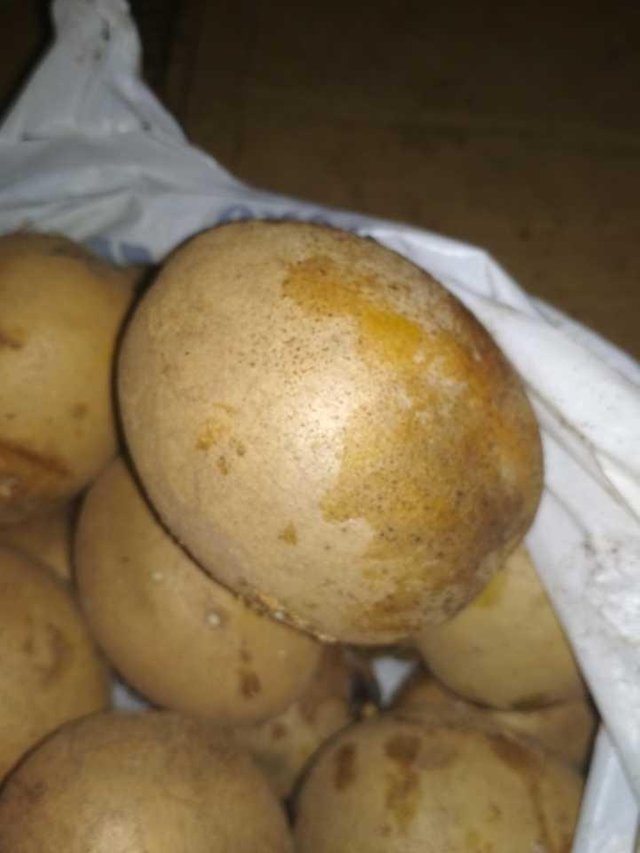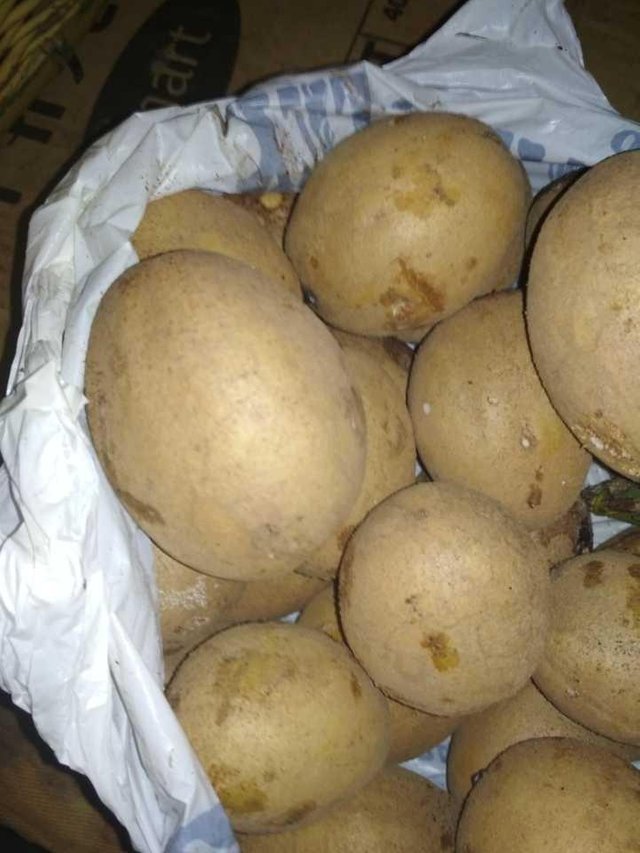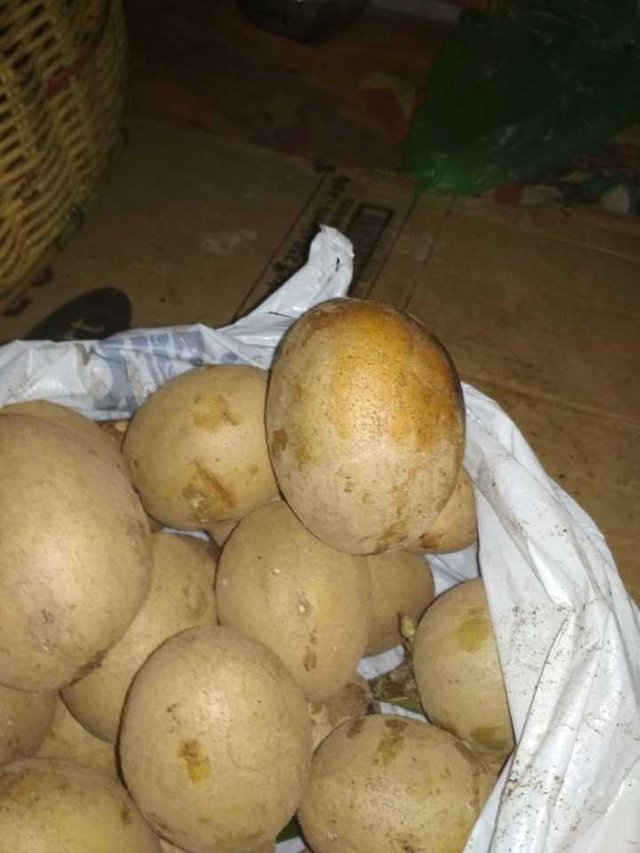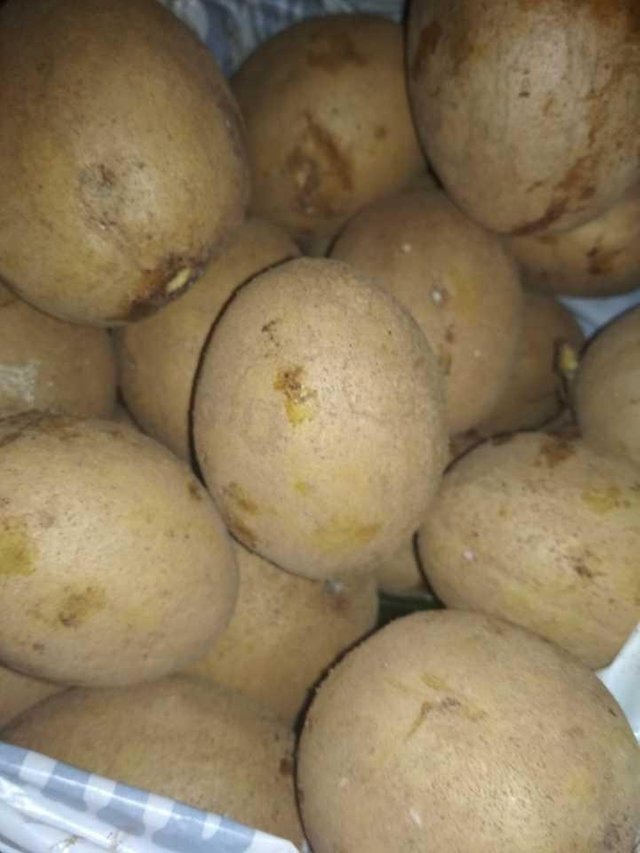The Process of Sawo Fruit Cultivation
Hi all. May we always be in the protection of Allah SWT.
On this occasion I want to post some posts. Hopefully useful for all of us

Sawo is one type of fruit plant
which is widely cultivated on a small scale. Sawo
usually planted together with fruit crops
others in the yard garden system. Sawo enough
liked many people because the fruit is delicious and
it feels typical. The flesh has a texture
typical, sweet taste and distinctive aroma
and fresh. Sawo gives enough prospects
good economy if cultivated properly.
2. Site Selection Crops
a. Climate
- The plant is quite customizable
against various temperatures. But the temperature is too hot will damage
growth of sawo. - Rainfall between 1250-2500 mm per year is spread evenly throughout
year. - Sawo is quite resistant to wind disturbance.

b. Elevation of the place
- Sawo grows very well at an altitude of 100-200 m above sea level and
can still grow quite well up to 900-2500 m altitude above
sea level.
c. Soil
- Sawo grows well on alluvial soil and sandy soil. On clay, sapodilla
still able to grow good drainage origin. - Sawo is quite resistant to drought.
- Sawo grows well on soil with a soil pH range between 6-7.

3. Cultivation
a. Plant propagation
- Sawo can be propagated by generative (with seed) or by
vegetative.
b. Soil processing - Prepare the land before the rainy season.
- Clean the land from the grass, then hijacked, digangkul.
c. Spacing
- Spacing about 8-9 m x 8-9 m, so the plant will not be close together
when it's big. - Place an area where the hole will be planted.
d. Preparation and filling of holes
- Make holes with size 50 x 50 x 50 cm and place the ajir on
the middle part. - Separate the top and bottom of the excavation.
- Fill the hole with the top soil mixed with manure r 30 kg /
hole. - Let the open hole approximately 2 weeks to accelerate weathering.
e. Planting
- Planting in the rainy season.
- Do it in the afternoon.
- Remove polybags carefully so the ground does not break.
- Keep the root neck fixed as at the time in the nursery and that part
diokulasi / sambung not accumulated soil and eye facing eye direction
east of the sun. - Give shade, mulch, and cover crops at the beginning of growth
sawo.

f. Care
i. Sprinkling
- Do it every day to keep plants from wilting. Do watering with
be careful because sapod is very sensitive to puddles.
ii. Control of pests and diseases
There are some diseases that usually attack sawo pink disease (fungus
upas) caused by the fungus Corticium salmonicolor and spotting diseases
leaf (Phaeophleospora indica) caused by fungi. This disease
can be controlled by spraying fungicides containing sulfur
or copper. Perform fungicide spraying for example with slurry
Bordeaux (with the dosage as stated on the package).While the pest that attack sawo is the fruit fly (Daucus dorsalis)
who eat the meat of ripe fruit.
iii. Pruning flowers, twigs and branches
- Sawo does not require pruning.
iv. Weeding and stretching
- Do weed weeding.
- Do weeding on young plants with care, ie with
weed out the weeds - Perform burrows around the plant together with sapodilla
weeding so as to provide a good environment for the roots.
v. Fertilization
- At the age of 1 year, fertilize 0.5 kg NPK / tree / year. Furthermore,
add gradually with age. - Give fertilizers 2 times a year, ahead of the rainy season to support
growth and towards the end of the rainy season to support
fruit production.
g. Harvesting
- Sawo derived from seeds begin to bear fruit after 5 years old. Sawo from
Vegetative propagation usually produces faster. - The amount of fruit depends on the age of the plant. 15 year old plants can
resulting in 280-300 kg of fruit. - Sawo can bear fruit throughout the year but usually there are 1 or 2 seasons
harvest. - Ripe fruit meat will change color from green to brownish yellow.
From outside the appearance of ripe fruit is difficult to see because the flesh is coated with skin
which is brownish yellow. Ripe fruit will produce less
sap compared to raw fruit. The easiest way to observe the ripe fruit is to split the fruit and look at the fruit flesh.
Reference :
- Coronel, RE. 1983. Promising Fruits of the Philippines. University of the Philippines at Los
Banos College of Agriculture. Laguna. Philippines. p. 621. - Samson, JA. 1986. Tropical Fruits, second edition. Longman Scientific & Technical Inc. New
York. USA p. 336
Yaacob, O and Subhadrabandhu, S. 1995. The Production of Economic Fruits in South-east Asia.
Oxford University Press. Kuala Lumpur. Malaysia. p. 419 - Verheij, EWM and Coronel, RE (editors). 1992. Plant Resources of South-East Asia, No 2, Edible
Fruits and Nuts. PROSEA, Bogor, Indonesia. p. 452.
Thank you
Upvote and resteem yes
Follow me @akmalrazi
Hello! I find your post valuable for the art community! Thanks for the great post! ARTzone is now following you! ALWAYs follow @artzone and the artzone tag, and support our artists!
Congratulations @akmalrazi! You have completed some achievement on Steemit and have been rewarded with new badge(s) :
Click on any badge to view your own Board of Honor on SteemitBoard.
To support your work, I also upvoted your post!
For more information about SteemitBoard, click here
If you no longer want to receive notifications, reply to this comment with the word
STOPDo not miss the last announcement from @steemitboard!
nice @akmalrazi, please upvote my blog...